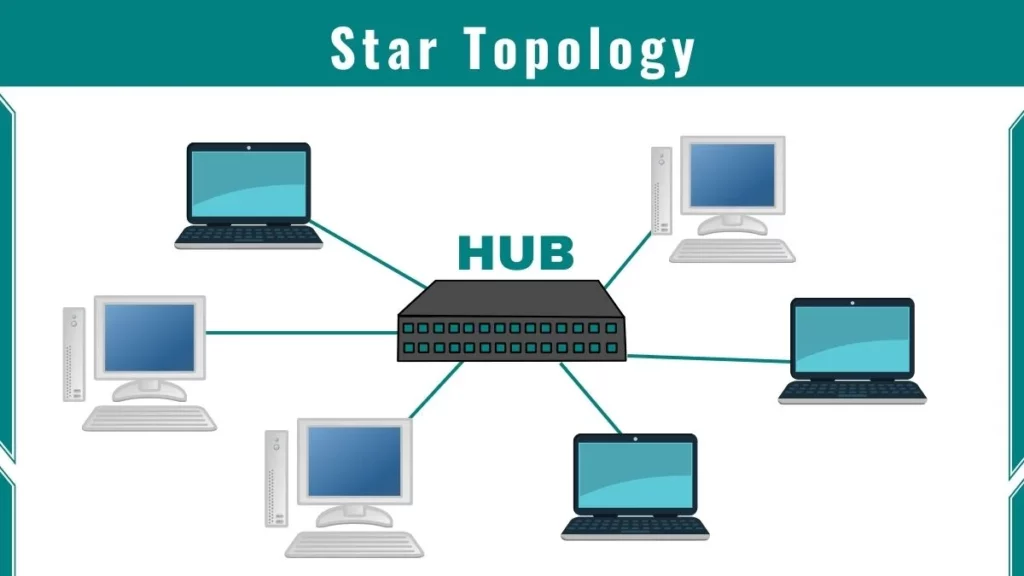Star topology is a common way of connecting devices. It’s a type of network where all the nodes (computers, printers, etc.) link to a central hub or switch. Think of it like a star, with the hub at the center and the nodes as the points radiating from it.
Definition of Star Topology
Star topology is defined as a network topology where each node is directly connected to a central hub. This hub acts as a communication point that allows data to flow between the connected nodes.
Star topology is sometimes referred to as a “hub-and-spoke” network topology, as it resembles a hub with spokes (nodes) radiating from it.

Star Topology in Computer Network
This topology is widely used in modern computer networks. This is especially used in offices and homes. The central hub acts as a communication point. It receives data from one node and transmits it to the intended destination node. Each node has a direct connection to the hub making it easy to add or remove devices without disrupting the entire network.
Star Topology Network Used For
Star topology is often used for client-server networks where the central hub acts as the server, and the nodes are the clients. It’s also well-suited for environments where centralized management and control are required such as in corporate networks or internet service provider (ISP) networks.
- Star topology is widely used in local area networks (LANs) for offices and homes.
- It is commonly deployed in client-server networks where multiple clients connect to a central server.
- Star topology provides a centralized management point making it easier to monitor and control network traffic.
- It simplifies troubleshooting, as problems can be easily isolated to a specific cable or node.
- It is ideal for real-time applications such as video conferencing and online gaming, due to its efficient data transmission.
- Star topology is commonly used in wireless networks with the central node acting as an access point.
- It is suitable for networks that require high reliability and fault tolerance, as a failure in one cable or node does not affect the entire network.
Star topology offers several advantages as they are easy to manage and problems are easy to find. It also has some drawbacks like if the central hub breaks down the whole network stops working and it costs more for all the cables.
Also Read:


